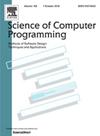Neighborhood contrastive learning-based graph neural network for bug triaging
Abstract
Researchers have been developing automatic bug triaging techniques by leveraging bug information sourced from bug tracking systems. Recent studies have modeled the bug-developer relationship as a graph, introducing graph neural networks for bug triaging. Despite achieving positive outcomes, these methods overlook issues related to data sparsity and fail to fully exploit implicit relationships within the graph. In addressing these challenges, we present the Neighborhood Contrastive Learning-based Graph Neural Network Bug Triaging framework, abbreviated as NCGBT. Our approach models the relationship between bugs and developers as a bipartite graph. We utilize a pre-trained language model to acquire the initial representation of bug nodes. Employing a basic graph neural network framework, we learn the representation of all nodes and leverage these representations to predict developers for a given bug. Our proposed strategy involves neighborhood contrastive learning applied to the basic graph neural network approach. We take into account the neighbors of nodes from both structural and semantic perspectives, utilizing them as contrastive objects. Extensive experiments conducted on three public datasets demonstrate the effectiveness of the NCGBT framework.

 求助内容:
求助内容: 应助结果提醒方式:
应助结果提醒方式:


